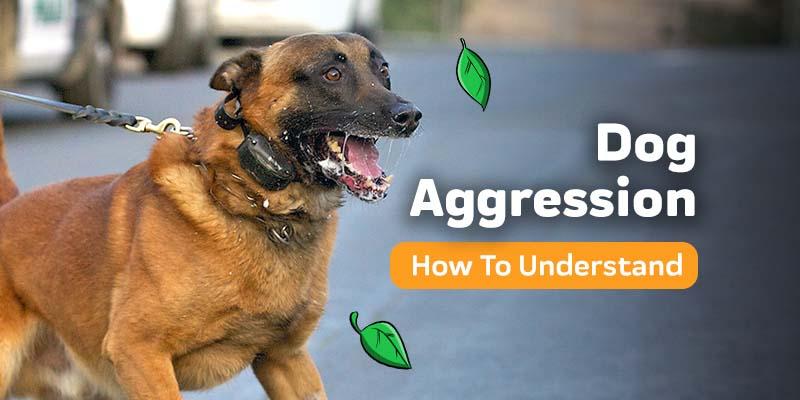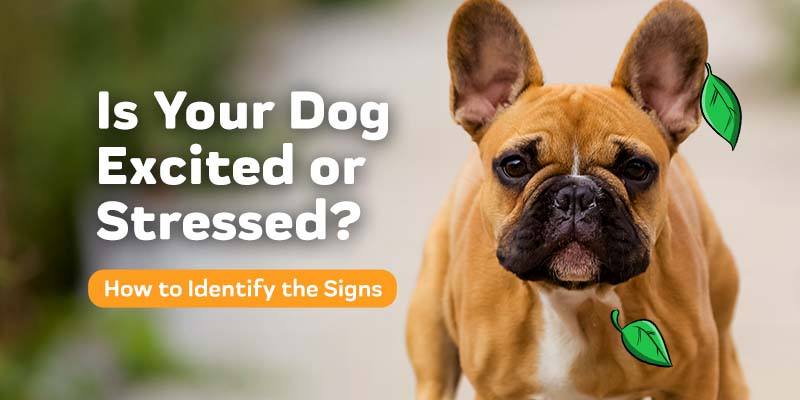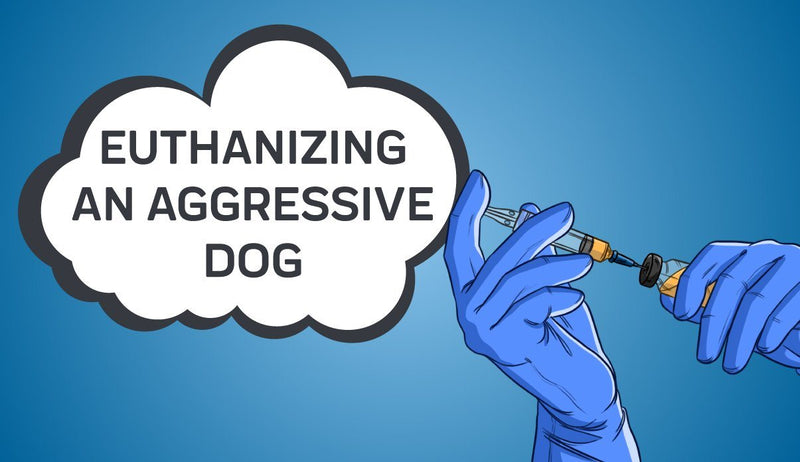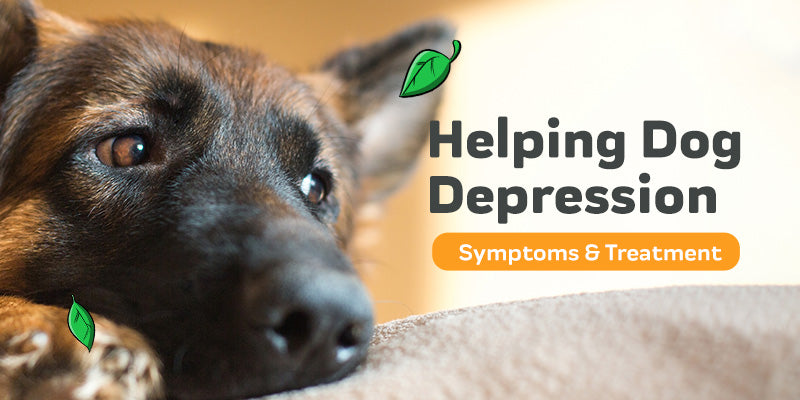By definition, aggression is a behavior that insinuates harm is on the horizon. Usually, it's in response to something triggering or frightening. Behavior that is aggressive is expressed by dogs that are put in an uncomfortable situation where they perceive some sort of threat. It's a defense mechanism intended to protect the dog, but aggressive behavior doesn't take the safety of others into consideration at all. This can be alarming to many dog owners.
As a result, aggression causes a lot of complications for pets and owners alike. To best understand dog aggression, it helps to familiarize yourself with the seven types of aggression in dogs.

These seven kinds of dog aggression include:
- Aggression Stemming from Pain
- Fear-Motivated Aggression
- Frustration-Related Aggression
- Leash Aggression
- Possessive Aggression
- Predatory Aggression
- Social Aggression
1. Aggression Stemming from Pain
Dog aggression can stem from pain. For example, if a dog has an infected tooth then they may bite out of fear and frustration because the infection is causing them so much discomfort that it alters their perception of things around them which might result in fear aggression behavior.
This is their way of telling us they are in pain and because they literally can not tell us how they are feeling , the pain causes them to lash out. This is called redirected aggression where the pain has caused your dog to redirect his aggression towards the closest perceived threat even if it's non-threatening.
2. Fear-Motivated Aggression
Fear-motivated aggression refers to behavior as a response to threats close to your dog. Whenever your dog senses that there is a threat nearby, they are likely to express protective aggression to protect themselves from the perceived threat. Pay close attention to the way it's called a perceived threat rather than an actual threat.
It's all about what your dog perceives, not what you can see, so just because you might not notice anything threatening in your surroundings, it doesn't mean your dog doesn't feel like he or she is in harm's way. Sometimes, the perceived threat is nothing more than another dominant dog that might trigger behavior associated with social aggression.

Another example of fear of aggression in situations where dogs become aggressive in response to displays of particular body language. When you train a puppy, dog owners, the first things you learn is approaching them in a non-threatening manner. An example of showing that you intend to cause no harm is avoiding direct eye contact until your dog is comfortable and familiar with you.
If you aren't aware of this training pro tip, or if you just happen to make eye contact by accident, then taking extra precautions not to repeat it in the future will bode well for everyone involved. Make sure to inform family members and friends that this behavior triggers your dog.
However, your dog should also be taught that acting aggressively in response to eye contact is not necessary. We'll talk more about how to treat aggression shortly, but for now, let's look at another type of behavior called frustration-related aggression.
3. Frustration-Related Aggression
Sometimes, the mere nature of being restrained can cause dogs to act aggressively. Usually, frustration-aggression is shown by dogs that haven't been adequately trained to abide by their owner's commands. Still, other times, it's merely in a dog's disposition to become easily frustrated.
Dogs that behave aggressively in response to frustrating situations can be taught to respond differently. Still, it starts off by understanding what causes your dog to feel frustrated in the first place. When aggression is related to frustration, it tends to revolve around control. Let's say your dog is still crate trained, and you notice your dog is certainly not the biggest fan of being restrained.
Such Dogs that aren't taught to be patient and stay in the crate until it's time for them to be released from it might act aggressively as a way of trying to pressure their owners to let them out. The longer a dog is restrained by the walls of the crate, the more frustrated and aggressive they'll become, so it's essential to work on retraining your dog. A professional dog trainer is best suited for the situation at hand, but we'll talk more about that in a moment!
4. Leash Aggression
Dogs aren't always aggressive in response to the presence of certain people or other dogs. Your dog may be acting aggressively as a result of being placed on a leash, which is also far more common than people realize. Dogs aggression typically manifests as dogs chewing on leashes, trying to wiggle their way out of their collars, or lunging as a way of acting out against their leashes.

The aggression dogs exhibit in response to being put on a leash makes a lot of sense when you think about it. Dogs aren't used to walking towards other dogs head-on, but rather from a semi-sideways position.
Having to greet other dogs in a straight line makes many dogs anxious and uncomfortable, which ends up being expressed as aggression. Dogs can be trained to feel more confident on a leash, but if there's any amount of discomfort associated with being on a leash, poor behavior will persist.
Leash aggression is also a side effect of dogs feeling like they are stuck in a situation they don't want to be in, so teaching them to feel safe on a leash will work wonders. Leash aggression is also a form of aggressive canine behavior that can yield even more complicated responses if it's not handled with the proper training.
5. Possessive Aggression
Possessive aggression is primarily defined by behavior that revolves around defending personal items or people the dog loves. For example, let's imagine a scenario in your neighborhood that you're out and about, strolling through a familiar environment as your dog gets daily exercise. All of a sudden, you spot a different dog and their owner walking towards you and yours, at which point you notice your dog's body starts tensing up a bit.

predatory behavior is shown with slight growling and snarling, your dog might show dog aggressive at the sight of the other dog. Your dog is reacting to another dog in this manner because your dog is possessive over you, someone they view as theirs, which is technically not unusual because you are their owner after all.
Your dog simply wants to protect what's theirs, even when it comes to their owner, and it's totally fine that your dog wants to defend you. However, the situation doesn't warrant such a strong territorial aggression response, and your dog will need to unlearn the bad behavior as a response to seeing other dogs while on a walk for the sake of everyone's safety.
6. Predatory Aggression
Predatory aggression relates to instances that tap into your dog's instincts to call upon their aggressive abilities. Usually, predatory aggression is exhibited by dogs that are used to being the pack leader, which are usually male dogs. When dogs are in a pack, one of them typically takes the lead, and this dog is known as the pack leader.
If your dog is used to being the pack leader, then he or she might react aggressively when they are met by assertive dogs that threaten their feeling of safety. As the self-entitled pack leader, your dog might leap at other dogs that invade your dog's boundaries. When boundary lines are crossed, your dog might act aggressively towards the other aggressive dogs.

Other predatory-related dog's aggression outbursts might stem from situations surrounding food. Most dogs become territorial over their food bowl, especially if they grew up in a household where food felt rationed or if your dog was taught to fight for their food every day. When dogs don't feel that food is aplenty, but instead that it is in limited supply, your dog might show direct aggression to scare other dogs/other animals away from eating their food.
7. Social Aggression
Aggression in social settings is not uncommon for dogs that don't get along well with other dogs. Social aggression is generally applicable to any moment where a dog lashes out in a public setting. Dogs with this type of aggression problems don't have the best experience with relationships, whether that applies to relationships with people or relationships with other dogs.
Social aggression is common in dogs that have not been trained to obey commands or listen to directions as well. When dogs are unsure how to respond to people, they act aggressively because their instinct is to protect themselves. Like all other types of dog aggression, socially-oriented confrontational behavior is easy to spot when you know the signs.
Signs That Your Dog May Become Aggressive
Aggressive dogs show apparent evidence that they are prone to aggressive behavior. When you know what to look out for, you can avoid situations where your dog might act aggressively until you can treat your dog's aggressive behavior with professional help.
Some of the warning signs that your dog might display aggression include:
- Stiff and alert body language
- Standoffish postures
- Uninterrupted and direct eye contact
- Ears standing straight up
- Growling at another dog
- Showing teeth to another dog
- Aggressive fighting
- Nipping or biting repeatedly
- Urinating on surroundings
Dogs can display these signs of aggression both towards people and other dogs. Sometimes, it's hard to tell if a dog is aggressive or just overly playful, but it all comes down to the feeling you get from the situation. On paper, the signs of unruly behavior sound eerily similar to the signs of a dog's desire to play, but the overall vibe is incredibly different between the two.
You'll know an aggressive situation when you see one, so trust your instincts. Plus, you know your dog better than anyone else, so you can probably tell early signs that your dog is about to do in just about any situation. If you sense that your dog is uncomfortable in any way, you'll want to take measures to stop the behavior from happening.
How to Stop Dog Aggression
Now that you know all about the different types of bad behavior in dogs, you might be wondering how to stop dog aggression. Hostile behavior in our canine companions is not easy to correct, but it's certainly possible. Finding the right solution to your dog's behavior will make your dog's life so much better in every possible way.

Three of the many behavior modification techniques for stopping dog aggression include:
- Avoiding punishment for your dog
- Hiring a trainer who specializes in aggression
- Call your veterinary behaviorist for situation-specific input
Avoid Punishment for Your Dog
Most instances where dogs display aggressive behavior are the result of fear aggression. Aggression in dogs may come insecurity or in need of defending themselves for some reason. It makes little to no sense to punish a fearful dogs that is exhibiting confrontational behavior because they need reassurance and love, not to feel isolated even more.
Dog owners need to make sure to only implement positive reinforcement when responding to aggressive dogs. Positive reinforcement is a term that refers to offering a reward in response to desirable behavior. For example, if an aggressive dog is leash trained, offering a treat each time the dog behaves appropriately will teach the dog to forget the inappropriate behavior in favor of the appropriate behavior.
Seek professional help & hire a Dog Trainer Who Specializes in Dog Aggression
Have you considered looking into the idea of hiring a trainer for your dog? A dog trainer will be able to work one-on-one with your dog and provide care on an individual level. This means your dog's trainer can work on figuring out the exact causes of your dog's aggressive tendencies and create a plan of action to work on those exact triggers individually.
Before hiring a dog trainer to care for your aggressive dog, make sure the dog trainer has a credible background in handling dogs with aggressive tendencies. Canine aggression can baffle even the most knowledgeable dog lovers out there, so you must seek out a professional dog trainer.
A professional trainer who is an expert in dog aggression will be best suited for dogs with aggressive tendencies.
Call Your Veterinarian
Last but not least, you must speak with your dog's veterinarian to learn more about how best to manage your pet's behavior. Your dog might not show signs of aggression at the veterinarian's office, so it helps if you can explain stressful situations in great detail to give your vet an idea of how your dog acts when they are aggressive.
Let your vet know who your dog tends to be aggressive toward, and provide as much insight as you can so that your vet fully understands the situation. From there, the vet will be able to get a better idea of what's going on and develop a treatment plan for your dog's aggressive behavior!
Sources:
Aggression in DogsHow to Stop Aggressive Behavior in Dogs
Understanding Dog Aggression
Aggression
Understanding Aggressive Behavior In Dogs
Defining Aggression
How to Tell if a Dog is Being Aggressive
How to Stop Aggressive Dog Behaviour
Sara Redding Ochoa, DVM was raised in north Louisiana. She graduated from LA Tech in 2011 with a degree in animal science. She then moved to Grenada West Indies for veterinary school. She completed her clinical year at Louisiana State University and graduated in 2015 from St. George’s University. Since veterinary school she has been working at a small animal and exotic veterinary clinic in east Texas, where she has experience treating all species that walk in the hospital. In her free time, she likes to travel with her husband Greg, bake yummy desserts and spend time with her 4-legged fur kids, a dog Ruby, a cat Oliver James “OJ”, a rabbit BamBam and a tortoise MonkeyMan.
Thanks for stopping by!
P.S. We Love You!
Sincerely,
The Innovet Team
Please do not ask for emergency or specific medical questions about your pets in the comments. Innovet Pet Products is unable to provide you with specific medical advice or counseling. A detailed physical exam, patient history, and an established veterinarian are required to provide specific medical advice. If you are worried that your pet requires emergency attention or if you have specific medical questions related to your pet’s current or chronic health conditions, please contact or visit your local/preferred veterinarian, an animal-specific poison control hotline, or your local emergency veterinary care center.
Please share your experiences and stories, your opinions and feedback about this blog, or what you've learned that you'd like to share with others.















 CBD Oil for Dogs
CBD Oil for Dogs Advanced Mobility Support Chews for Dogs
Advanced Mobility Support Chews for Dogs All Natural Oatmeal & Honey Shampoo + Conditioner for Dogs
All Natural Oatmeal & Honey Shampoo + Conditioner for Dogs CBD Dog Treats
CBD Dog Treats



